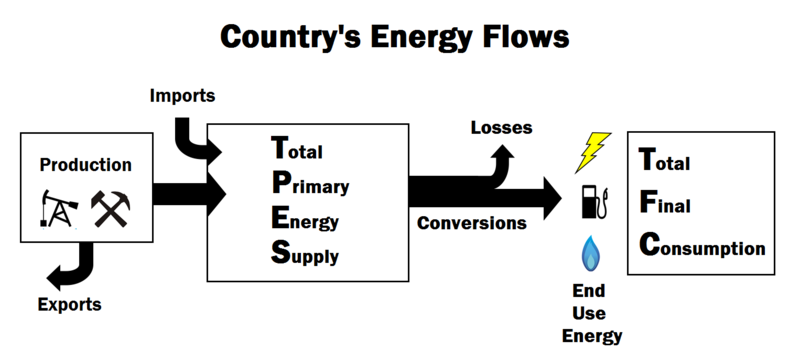Primary vs end use accounting
Primary energy accounting adds up all of the energy harvested from primary fuels and primary energy flows extracted from nature, the total sources of energy. This is different from end use energy accounting, which examines the energy people directly use in the form of secondary fuels and energy currencies. Two different methods of keeping track of this amount of energy have developed, each of these accounting types are used to highlight different parts of the energy sector. A systems approach to energy means being aware of both primary energy accounting and end use accounting.
Primary energy accounting is a way of looking at energy use at the natural resource end. This is energy used to produce secondary fuels and generate electricity. This type of accounting is useful for creating the total primary energy supply (TPES) of a country and focuses on where the energy is coming from.

People who hope to downplay the importance of hydroelectricity will focus on primary energy and not mention the thermodynamic inefficiencies that affect all of the power that comes from heat engines (just about everything else). This makes hydroelectricity look small.
For example, transportation energy is much smaller portion of primary energy than end use energy. This is because there is very little energy lost converting crude oil to transportation fuels (gasoline, diesel, kerosene). Conversely, electricity accounts for about three times as much primary energy as end use energy, because most power plants have about 33% efficiency. This means they must burn the fuel for 3000 MWt to create 1000 MWe. This changes the amount of energy considerably (by a factor of 3) that goes into electricity.
End use energy accounting refers to all energy that is directly consumed by the user. This includes electricity, gasoline, and natural gas.
Energy accounting can be a confusing subject, at times, because both end use accounting and primary energy accounting include the same categories, and many of the same energy sources.
References
- ↑ Created internally by a member of the Energy Education team.

